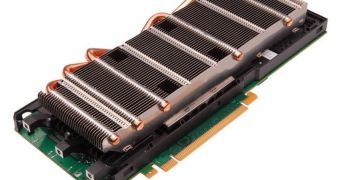Seeking to expand the usability of its GPU computing modules, NVIDIA has entered a partnership with Gaussian, Inc. for adding Tesla support to its quantum chemistry application.
GPU computing modules have definitely gained a reputation in supercomputing, thanks to their high parallel processing power.
Unfortunately, the fact is that, in the end, it is software applications that need to be designed with compatibility and optimizations for this sort of hardware setups.
Well aware of this fact, NVIDIA decided to enter a partnership with the owner of one of, if not the leading software application for quantum chemistry.
More specifically, the outfit sealed a deal with Gaussian, Inc, which will let the eponymous software use GPU acceleration whenever NVIDIA Tesla modules are present.
“Calculations using Gaussian are limited primarily by the available computing resources,” said Dr. Michael Frisch, president of Gaussian, Inc.
“By coordinating the development of hardware, compiler technology and application software among the three companies, the new application will bring the speed and cost-effectiveness of GPUs to the challenging problems and applications that Gaussian's customers need to address.”
Cost and time required for running data-intensive, complex calculations should be noticeably reduced once the next version of Gaussian comes out.
PGI will also contribute to the software's development, as part of a three-way arrangement with the other two.
“NVIDIA customers use GPU acceleration to push the boundaries in life sciences, and have been requesting a GPU-accelerated version of Gaussian,” stated Andrew Cresci, general manager of NVIDIA's Strategic Alliances Group.
“Adding Gaussian acceleration support with NVIDIA GPUs will enable computational chemists and engineers to tackle significant scientific problems more efficiently and cost-effectively than with competitive solutions. The potential jump in productivity is huge.”
Tesla modules promise to deliver benefits in other areas as well, like image and video processing, computational biology, fluid dynamics simulation, image reconstruction, seismic analysis, etc.

 14 DAY TRIAL //
14 DAY TRIAL //